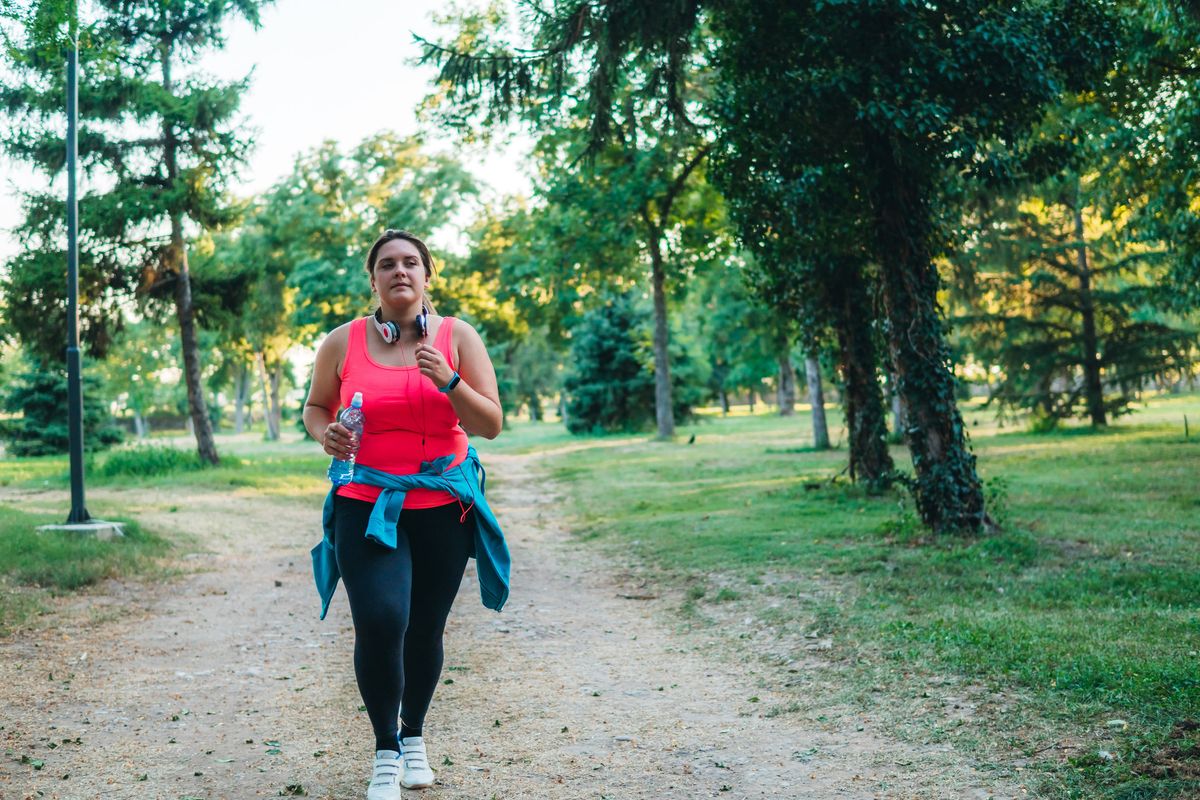By Bernard J. Wolfson, Kaiser Health News
If your life these days is anything like mine, a pre-pandemic routine that included regular exercise and disciplined eating has probably given way to sedentary evenings on a big chair, binge-watching reruns of your favorite TV series while guzzling chocolate ice cream or mac 'n' cheese.
But let's not beat ourselves up about it. Several doctors I spoke with recently said most of their patients and many of their colleagues are struggling to maintain healthy habits amid the anxiety of the pandemic. “The Quarantine 15" (pounds, that is) is a real phenomenon.
The double challenge of protecting our health, including our immune systems, while battling unhealthy temptations “is a struggle everyone is dealing with," says Dr. David Kilgore, director of the integrative medicine program at the University of California-Irvine.
Well before COVID-19, more than 40% of U.S. adults were obese, which puts them at risk for COVID-19's worst outcomes. But even people accustomed to physical fitness and good nutrition are having trouble breaking the bad habits they've developed over the past five months.
Karen Clark, a resident of Knoxville, Tennessee, discovered competitive rowing later in life, and her multiple weekly workouts burned off any excess calories she consumed. But the pandemic changed everything: She could no longer meet up with her teammates to row and stopped working out at the YMCA.
Suddenly, she was cooped up at home. And, as for many people, that led to a more sedentary lifestyle, chained to the desk, with no meetings outside the house or walks to lunch with colleagues.
“I reverted to comfort food and comfortable routines and watching an awful lot of Netflix and Amazon Prime, just like everybody else," Clark says. “When I gained 10 pounds and I was 25, I just cut out the beer and ice cream for a week. When you gain 12 pounds at 62, it's a long road back."
She started along that road in July, when she stopped buying chips, ice cream and other treats. And in August, she rediscovered the rowing machine in her basement.
But don't worry if you lack Clark's discipline, or a rowing machine. You can still regain some control over your life.
A good way to start is to establish some basic daily routines, since in many cases that's exactly what the pandemic has taken away, says Dr. W. Scott Butsch, director of obesity medicine at the Cleveland Clinic's Bariatric and Metabolic Institute. He recommends you “bookend" your day with physical activity, which can be as simple as a short walk in the morning and a longer one after work.
And, especially if you have kids at home who will be studying remotely this fall, prepare your meals at the beginning of the day, or even the beginning of the week, he says.
If you haven't exercised in a while, “start slow and gradually get yourself up to where you can tolerate an elevated heart rate," says Dr. Leticia Polanco, a family medicine doctor with the South Bay Primary Medical Group, just south of San Diego. If your gym is closed or you can't get together with your regular exercise buddies, there are plenty of ways to get your body moving at home and in your neighborhood, she says.
Go for a walk, a run or a bike ride, if one of those activities appeals to you. Though many jurisdictions across the United States require residents to wear masks when out in public, it may not be necessary — and may even be harmful to some people with respiratory conditions — while doing strenuous exercise.
“It's clearly hard to exercise with a mask on," says Dr. Yvonne Maldonado, a pediatrician specializing in infectious diseases at Stanford University's School of Medicine. “We go hiking up in the foothills and we take our masks with us and we don't wear them unless somebody starts coming the other way. Then we will put the mask on, and then we take it off and we keep going."
If you prefer to avoid the mask question altogether, think of your house as a cleverly disguised gym. Put on music and dance, or hula-hoop, Polanco suggests. You can also pump iron if you have dumbbells, or find a cable TV station with yoga or other workout programs.
If you search on the internet for “exercise videos," you will find countless workouts for beginners and experienced fitness buffs alike. Try one of the seven-minute workout apps so popular these days. You can download them from Google Play or the Apple Store.
If you miss the camaraderie of exercising with others, virtual fitness groups might seem like a pale substitute, but they can provide motivation and accountability, as well as livestreamed video workouts with like-minded exercisers. One way to find such groups is to search for “virtual fitness community."
Many gyms are also offering live digital fitness classes and physical training sessions, often advertised on their websites.
If group sports is your thing, you may or may not have options, depending on where you live.
In Los Angeles, indoor and outdoor group sports in municipal parks are shut down until further notice. The only sports allowed are tennis and golf.
In Montgomery County, Maryland, the Ron Schell Draft League, a softball league for men 50 and older, will resume play early this month after sitting out the spring season due to COVID-19, says Dave Hyder, the league's commissioner.
But he says it has been difficult to get enough players because of worries about COVID.
“In the senior group, you have quite a lot of people who are in a high-risk category or may have a spouse in a high-risk category, and they don't want to chance playing," says Hyder, 67, who does plan to play.
Players will have to stay at least 6 feet apart and wear masks while off the field. On the field, the catcher is the only player required to wear a mask. That's because masks can steam up glasses or slip, causing impaired vision that could be dangerous to base runners or fielders, Hyder explains.
Whatever form of exercise you choose, remember it won't keep you healthy unless you also reduce consumption of fatty and sugary foods that can raise your risk of chronic diseases such as obesity, diabetes and hypertension — all COVID-19 risk factors.
Kim Guess, a dietitian at UC-Berkeley, recommends that people lay in a healthy supply of beans and lentils, whole grains, nuts and seeds, as well as frozen vegetables, tofu, tempeh and canned fish, such as tuna and salmon.
“Start with something really simple," she said. “It could even be a vegetable side dish to go with what they're used to preparing."
Whatever first steps you decide to take, now is a good time to start eating better and moving your body more.
Staying healthy is “so important these days, more than at any other time, because we are fighting this virus which doesn't have a treatment," says the Cleveland Clinic's Butsch. “The treatment is our immune system."
Kaiser Health News (KHN) is a national health policy news service. It is an editorially independent program of the Henry J. Kaiser Family Foundation which is not affiliated with Kaiser Permanente.
Subscribe to KHN's free Morning Briefing.







